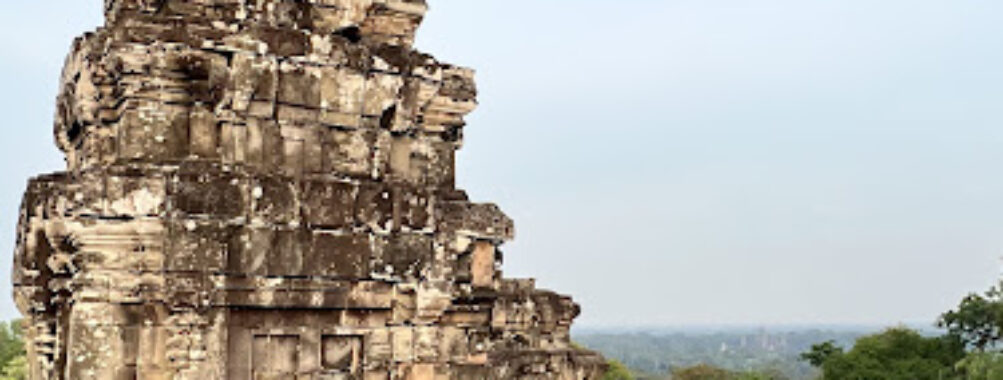
Phnom Bakheng
Table of Contents
Description
Perched majestically atop a hill in Angkor Archaeological Park, Phnom Bakheng stands as one of the oldest temples in the ancient city. This architectural marvel, constructed between 889 and 910 CE during the reign of King Yasovarman I, served as the state temple of the first Angkorian capital. The temple’s distinctive pyramid shape, rising 65 meters above the surrounding landscape, represents Mount Meru – the sacred mountain home of Hindu deities.
I’ll never forget my first visit here – the sheer magnitude of this ancient structure literally took my breath away. And trust me, that wasn’t just from climbing those steep steps! The temple’s five-tiered design isn’t just for show; it’s actually a brilliant representation of the Hindu cosmos, with each level telling its own story through intricate carvings and architectural elements.
Key Features
• Seven levels of sandstone construction representing the seven heavens of Hindu mythology
• 108 small towers arranged in a perfect geometrical pattern (though many are now partially ruined)
• Intricate bas-reliefs depicting Hindu deities and mythological scenes
• Original lion statues guarding the temple’s eastern approach
• Remarkable astronomical alignment – the temple faces east and has been built to catch specific sunlight angles
• Ancient water management system including barays (reservoirs)
• Multiple terraces offering panoramic views of Angkor Wat and Tonle Sap Lake
• Historical evidence of both Hindu and Buddhist worship practices
Best Time to Visit
Y’know what’s funny? Everyone rushes here for sunset – and yeah, it’s spectacular – but I’ve found early morning visits can be just as magical. The temple opens at 5:00 AM, and honestly, watching the sunrise here is an incredible alternative to the crowded evening scenes. If you’re dead-set on that famous sunset view (and I totally get why), arrive around 4:00 PM to secure your spot.
The optimal months to visit are November through February when the weather’s more forgiving. The skies are clearer, humidity’s lower, and you won’t feel like you’re melting while climbing those steep steps. October and March can be good too, but pack an umbrella – random showers love to crash the party.
How to Get There
Getting to Phnom Bakheng is pretty straightforward. Most folks base themselves in Siem Reap and grab a tuk-tuk – it’s about a 15-minute ride from the town center. If you’re feeling adventurous, rent a bicycle and make your way through the archaeological park. But lemme tell you from experience – that hill climb at the end might make you regret that decision!
The main pathway starts near the parking area, and you’ve got two options: tackle the original ancient pathway (steep but authentic) or take the newer, more gradual trail that winds around the hill. Fair warning – both routes involve some serious stepping action, so wear comfy shoes and bring water.
Tips for Visiting
Look, I’ve made every rookie mistake possible here, so learn from my blunders! First off, wear proper footwear – those ancient steps are no joke, and flip-flops are basically a death wish. Bring a flashlight if you’re staying for sunset – the walk down in the dark can be tricky.
Arrive at least an hour before sunset to grab a decent viewing spot. The temple has a strict visitor limit during sunset hours, and they’re serious about it. Pack water and maybe a small snack, but remember to take any trash with you – this is an ancient temple, not a picnic ground.
During rainy season, check the weather forecast before heading up. Those sandstone steps get super slippery when wet, and thunder storms can roll in quickly. Also, cover up appropriately – this is still an active religious site, so shoulders and knees should be covered.
Oh, and here’s a pro tip that most guidebooks won’t tell you – the northwestern corner usually has fewer people but equally stunning views. The temple grounds close at 7:00 PM, but guards start ushering people down around 6:30 PM, so plan accordingly.
And please, while those carved stones might look comfy, resist the urge to sit on the ancient structure itself. There are designated viewing areas that won’t damage this incredible piece of history. Trust me, future generations of travelers will thank you for helping preserve this remarkable monument.
Location
Places to Stay Near Phnom Bakheng
Find and Book a Tour
Explore More Travel Guides
No reviews found! Be the first to review!